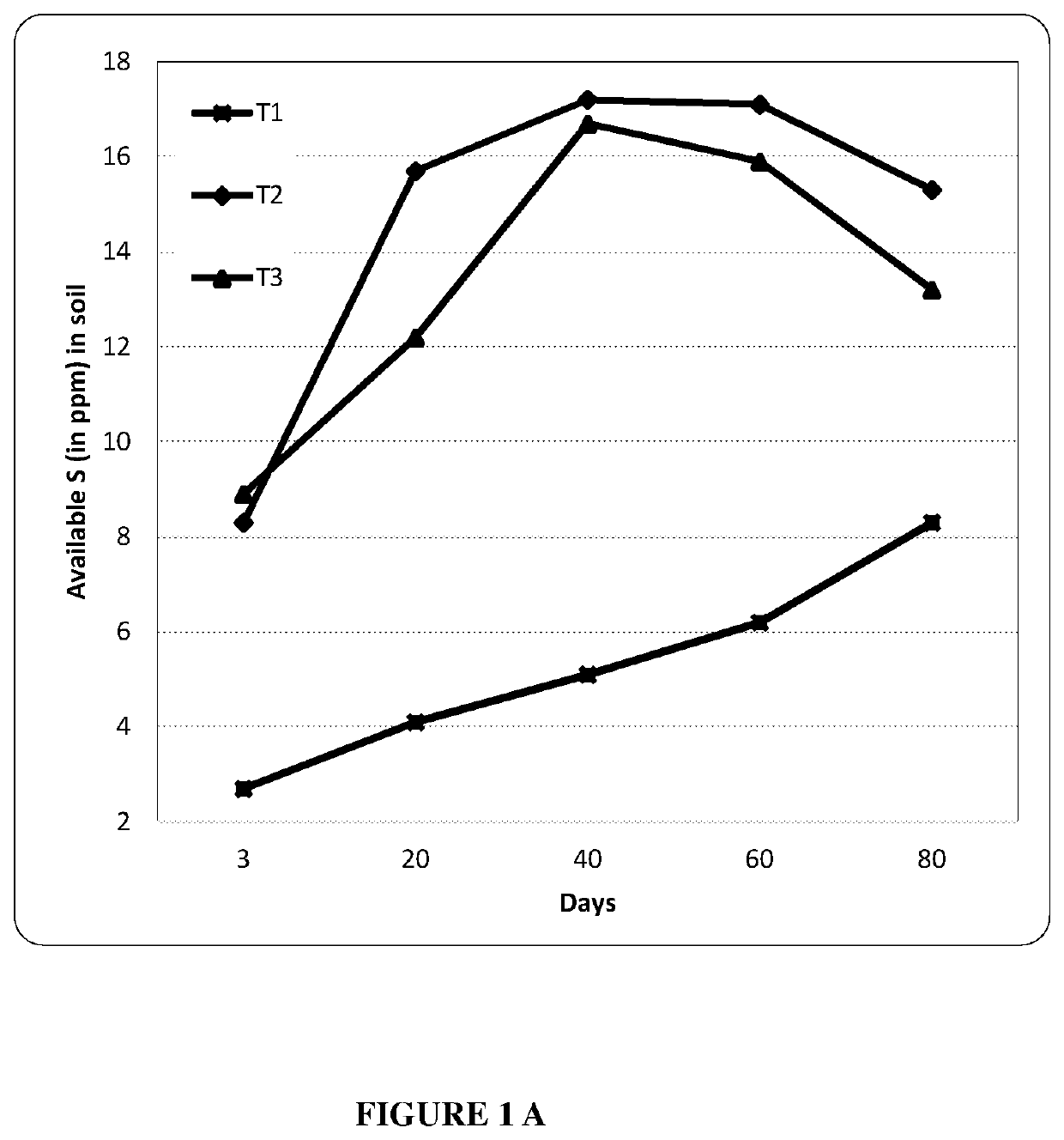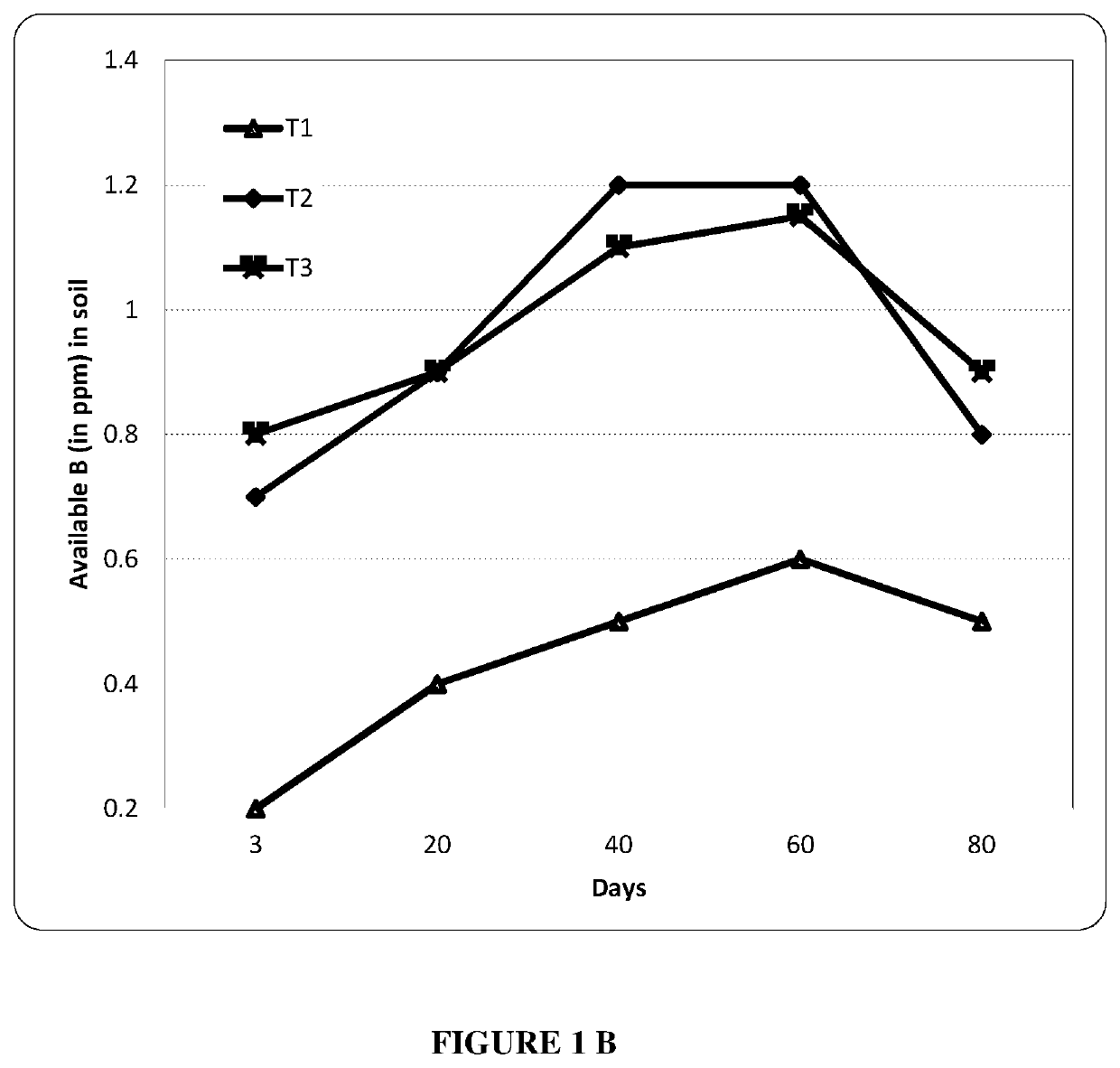Novel crop nutrition and fortification composition
a technology of composition and crop, applied in the field of crop nutrition and fortification composition, can solve the problems of limiting the growth of crops, inhibiting cell expansion, and inability to mobilize boron from vegetative tissues, etc., and achieves enhanced susceptibility, good physical and chemical properties, and easy dispersibility.
- Summary
- Abstract
- Description
- Claims
- Application Information
AI Technical Summary
Benefits of technology
Problems solved by technology
Method used
Image
Examples
preparation examples
[0149]The following examples illustrate the basic methodology and versatility of the composition of the invention. It is recognized that changes may be made to the specific parameters and ranges disclosed herein and that there may be a number of different ways known in the art to change the disclosed variables. However, it should be noted that these preparation examples are merely exemplary and are not intended to limit the scope of the invention and whereas it is understood that only the preferred embodiments of these elements are disclosed herein as set forth in the specification and drawings, the invention should not be so limited and should be construed in terms of the spirit and scope of the claims that follow.
A. Water Dispersible Granular Composition of Boron Salts and Elemental Sulphur
[0150]Example 1: Water dispersible granular composition of 5% Calcium Borate and 90% elemental sulphur: 90 parts of elemental sulphur, 5 parts of Calcium Borate, 5 parts of naphthalene sulphonat...
PUM
| Property | Measurement | Unit |
|---|---|---|
| size | aaaaa | aaaaa |
| size | aaaaa | aaaaa |
| size | aaaaa | aaaaa |
Abstract
Description
Claims
Application Information
 Login to View More
Login to View More - R&D
- Intellectual Property
- Life Sciences
- Materials
- Tech Scout
- Unparalleled Data Quality
- Higher Quality Content
- 60% Fewer Hallucinations
Browse by: Latest US Patents, China's latest patents, Technical Efficacy Thesaurus, Application Domain, Technology Topic, Popular Technical Reports.
© 2025 PatSnap. All rights reserved.Legal|Privacy policy|Modern Slavery Act Transparency Statement|Sitemap|About US| Contact US: help@patsnap.com


